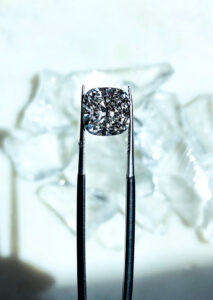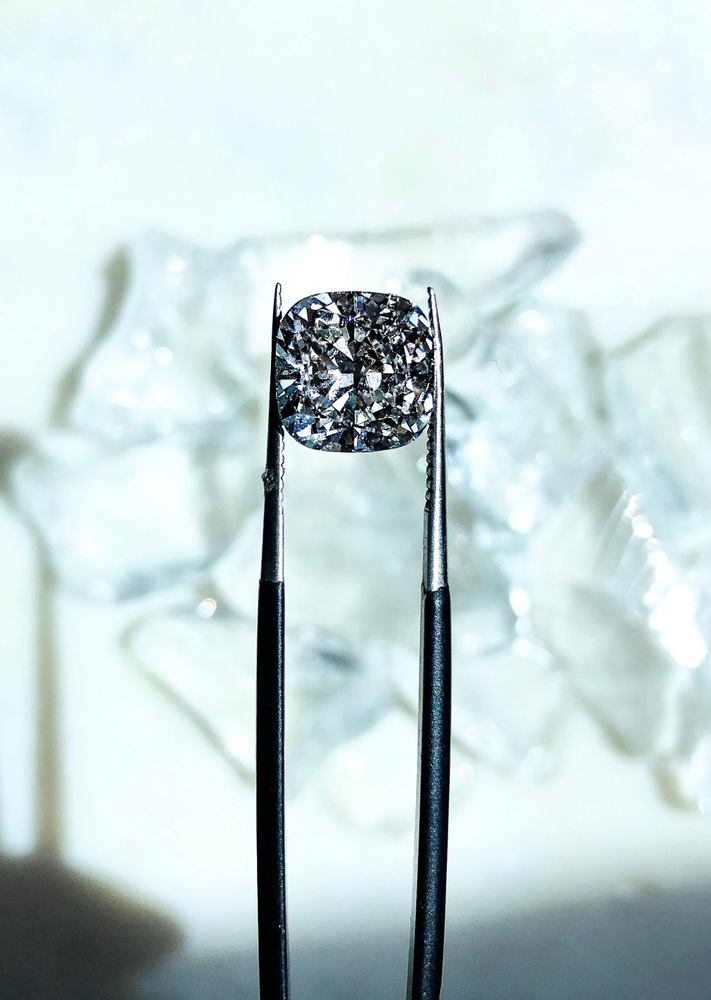
Artificial diamonds, also known as lab-grown or synthetic diamonds, have made significant strides in various industries. Their exceptional hardness, optical properties, and eco-friendly production have sparked interest in their potential applications. One intriguing possibility is using artificial diamonds as camera lens coverings in modern-day smartphones. Let’s delve into the possibilities and advantages of this innovative concept.
The Rise Of Artificial Diamonds
- Unparalleled Durability: Artificial diamonds are created through advanced processes that mimic the conditions deep within the Earth’s mantle where natural diamonds are formed. This results in diamonds that are chemically identical to their natural counterparts, offering unmatched durability. When applied as camera lens coverings, artificial diamonds could protect the delicate lenses from scratches, smudges, and impacts, ensuring clear and pristine photography.
- Superior Optical Properties: Diamonds are renowned for their exceptional optical properties. They possess a high refractive index and excellent light dispersion, which can enhance the quality of smartphone photography. By using artificial diamonds as lens coverings, smartphone manufacturers can potentially improve the sharpness, clarity, and color accuracy of images and videos.
- Scratch Resistance: One of the most common issues smartphone users face is lens scratching. Traditional lens cover materials, such as glass or plastic, are susceptible to scratches, which can degrade image quality over time. Artificial diamonds, with their remarkable hardness, can offer superior scratch resistance, allowing smartphone users to enjoy consistently clear and sharp photos and videos.
The Challenges To Overcome
While the idea of using artificial diamonds as camera lens coverings is promising, several challenges need to be addressed before it becomes a mainstream reality.
- Cost Considerations: Artificial diamonds, though more affordable than natural diamonds, are still relatively expensive to produce. The cost of incorporating them into smartphone camera modules could drive up the overall price of the device. Manufacturers will need to strike a balance between cost and performance to make this technology accessible to a wider consumer base.
- Mass Production: To meet the demands of the smartphone market, artificial diamond production would need to scale up significantly. Current lab-grown diamond facilities may need to expand their capacity to ensure a stable supply of high-quality diamonds for lens coverings.
- Integration and Compatibility: Integrating artificial diamonds into smartphone camera modules requires precision engineering. The lenses must be seamlessly integrated into the design without compromising the slim and sleek profiles that consumers demand. Additionally, compatibility with existing camera technologies and features is essential for a smooth user experience.
The Potential Benefits
- Enhanced Photography Experience: The primary advantage of using artificial diamonds as camera lens coverings is an enhanced photography experience. Users can expect sharper, clearer, and more vibrant photos and videos, making it a compelling feature for smartphone enthusiasts and professional photographers alike.
- Longevity and Durability: Artificial diamonds’ scratch resistance ensures the longevity and durability of smartphone camera lenses. This means users won’t need to worry about lens damage compromising their device’s photographic capabilities.
- Environmental Friendliness: Lab-grown diamonds are more environmentally friendly than traditional diamond mining. Their production consumes fewer resources and has a lower carbon footprint, aligning with the growing demand for sustainable technology.
The potential of artificial diamonds as camera lens coverings in modern smartphones is an exciting prospect. With their exceptional durability, superior optical properties, and scratch resistance, artificial diamonds have the potential to revolutionize smartphone photography. However, challenges such as cost, mass production, and integration must be addressed to make this innovation accessible to a wider audience. If successful, artificial diamonds could take smartphone photography to new heights, allowing users to capture the world with unparalleled clarity and brilliance.
